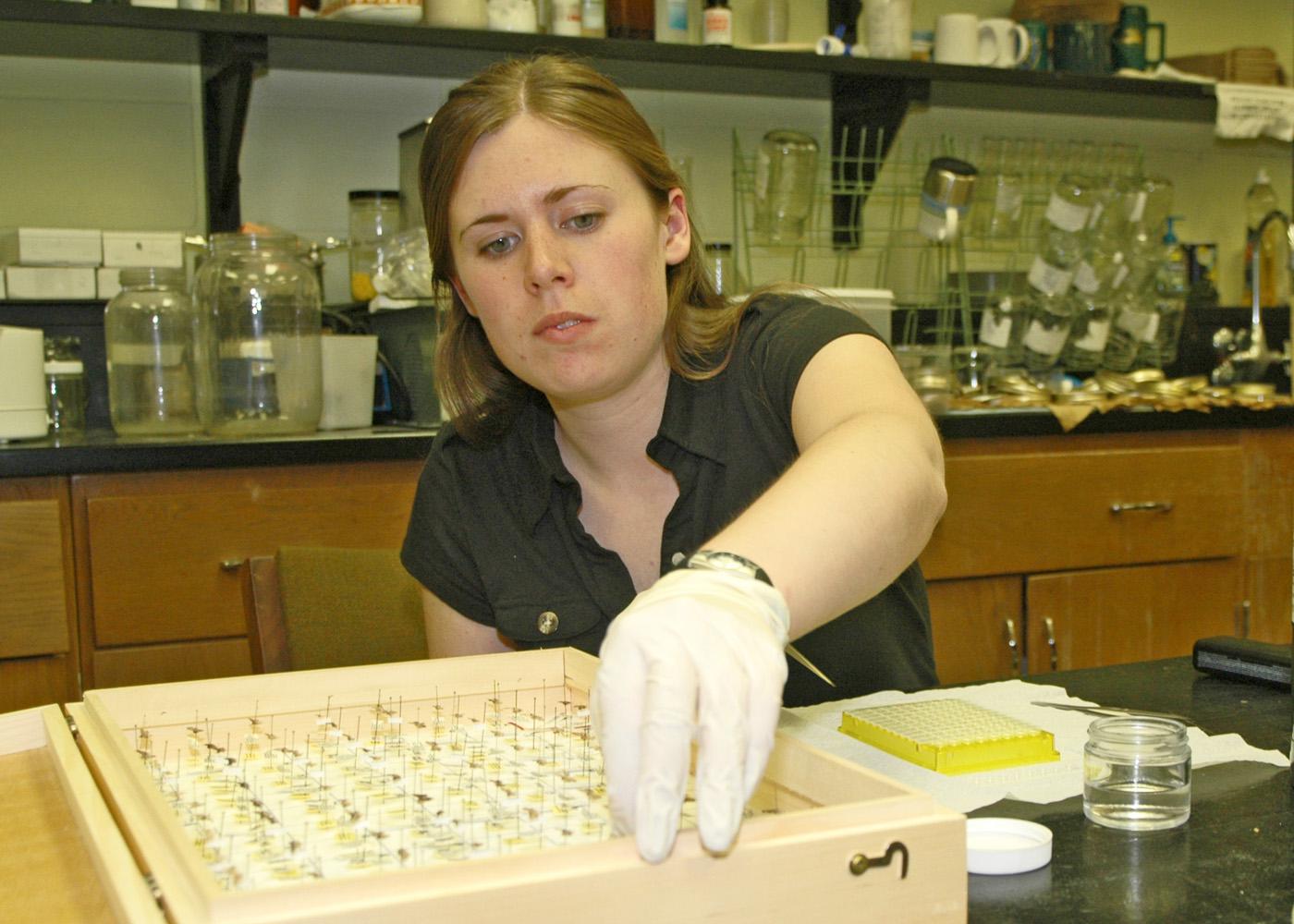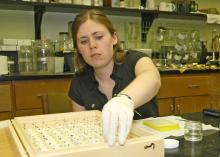Information Possibly Outdated
The information presented on this page was originally released on May 14, 2009. It may not be outdated, but please search our site for more current information. If you plan to quote or reference this information in a publication, please check with the Extension specialist or author before proceeding.
MSU entomology museum provides good genetic info
By Patti Drapala
MSU Ag Communications
MISSISSIPPI STATE – A team of Canadian researchers cataloging the genetic makeup of all living species into an easily accessible system have identified the Mississippi Entomological Museum as a treasure trove after setting up camp at Mississippi State University for a week.
That comes as no surprise to the thousands of researchers, amateur entomologists and nature enthusiasts who either have visited in person or discovered the museum’s World Wide Web site. The museum, which is housed in the MSU Department of Entomology at the Clay Lyle Building, maintains an extensive collection of insects found in the state and throughout the South.
The attempt to catalog genetic material is an effort of the Consortium for the Barcode of Life, an international movement of public and private groups involved in taxonomic research and biodiversity issues. The consortium began several years ago when scientist Paul Hebert, director of the Biodiversity Institute of Ontario at the University of Guelph, concluded that a segment of DNA unique to each species would be a quick and accurate identification tool with many different uses.
“We have a prominent Internet presence, and people know we’re here,” said museum director Richard Brown. “Many people do not realize how sophisticated our surveying, collecting, classifying and preserving activities are, or the wealth of scientific information we have. We were happy to accommodate the Canadian group as they continue to make progress with this project.”
Using a genetic barcode to identify a species is comparable to barcoding systems in stores, said Jay Cossey, a research photographer at the biodiversity institute’s Canadian Centre for DNA Barcoding.
“Each store product has a barcode that identifies that item when scanned,” Cossey said. “We apply that same process to accessing genetic information on each species when we assign a barcode to that information.”
The barcode for DNA is a short, standardized region of the gene that contains the unique identifiable material for each species.
“The DNA barcode makes it possible to identify species because one segment of that information has been analyzed, recorded and stored in a database,” Cossey said. “One could have a small, handheld device to access the database and thus make identification instantaneous.”
Traveling to museums across the United States and Canada is a manageable and affordable way of gathering genetic information on different species. During the visits, the researchers photograph specimens, record capture and trapping information, and take tissue samples that are sent to the University of Guelph for DNA analysis.
“Depending upon the size of the specimen, we may take a small segment of a leg or remove a leg, taking care to preserve the specimen’s integrity,” said team member Jayme Sones, a wildlife biologist. “It takes a steady hand and great eyes.”
Members of the research team worked with Brown to examine specimens that would make good contributions to the database. Although the researchers concentrated on the museum's extensive collections of moths, they sampled other insects, including wasps, bees, ants, flies, dragonflies, aquatic insect larvae, butterflies and moths.
“The identification of species is crucial to the understanding of both our ecosystem and our agricultural interests here in Mississippi,” Brown said. “For example, we have many moths in the state that we have not been able to identify. The research team has obtained DNA samples of these specimens, and we will be able to identify these species after the analysis is complete.”



